
All categories
Featured selections
Trade Assurance
Buyer Central
Help Center
Get the app
Become a supplier

(6487 products available)
















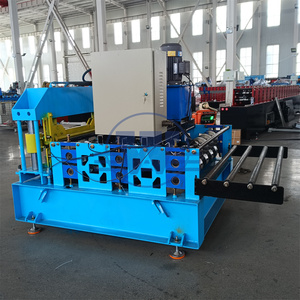




























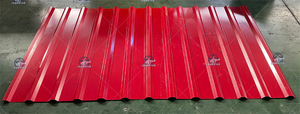
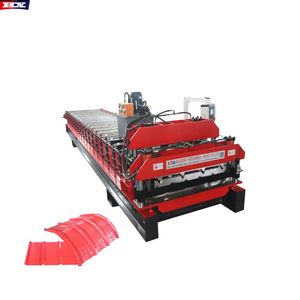

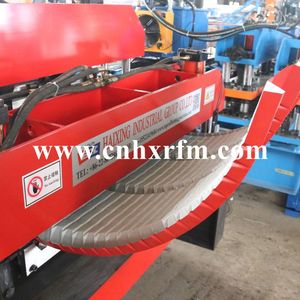

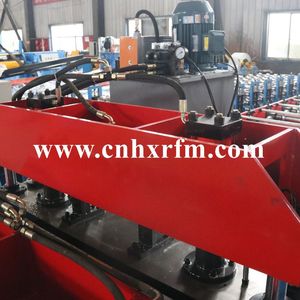

Curve forming machines are diverse machines catering to bending different materials and producing curves and shapes. The following are some different types of curve forming machines:
Roll Bending Machine
The machine has three cylinders arranged in a triangular pattern. The top moveable center roll exerts force on the sheet under the two lower rolls, which are stationary. The role bending machine is perfectly suited for bending metal or fabricating plates in a curve.
Heat Press Machine
The heat curve forming machines use heat and pressure to reshape materials into curves. Initially, flat sheets are heated to a specific temperature to make them pliable. Once the required temperature is achieved, the sheet is placed onto a mold to create the desired curve. The pressure seals the sheet onto the mold. After cooling down, the sheet retains the curved shape of the mold. Heat press machines are mostly used in the plastic industry.
Hydraulic Curved Machine
The hydraulic curve forming machine uses hydraulic force to bend metal into curves. The machine uses a hydraulic pump to push a ram that exerts pressure on the metal workpiece. This forms the desired curved shape. Depending on the technician's preferences and requirements, the hydraulic curve forming machines can feature dies and molds for a variety of curves. The machines are usually used in the automotive and aerospace industries.
Electromagnetic Curving Machine
The electromagnetic curve forming machines create curves rapidly and accurately using electromagnetic forces. An electromagnetic coil generates a magnetic field that applies force to the metal workpiece, bending it into a desired curve.
Finger Jig Curving Machine
Also known as 'segment jigs', the finger jigs curve forming machine features segmented jigs with fingers that can be independently adjusted to match different curves. The workpiece is clamped down onto the jigs and then pulled or pushed into shape. The machine is suitable for woodwork and carpentry and can achieve accurate and complex curved shapes.
Curve machines' specifications vary according to the types and models.b general specifications include the maximum capacity, working speed, bending angle, power supply, and dimensions.
Like other machines, the curve-forming machine requires maintenance to keep it in optimal condition. The following are some maintenance tips.
The uses of a curve-forming machine vary depending on the type and make. Generally, these machines are fabricating metal parts and components with curves or bends. The following are some uses of this machine:
Curve forming machines are manufactured with different capabilities and characteristics to meet various needs. When purchasing a curve-forming machine, it is essential to check the material it can handle, the bending capacity, and the overall quality.
Material Compatibility
Different curve-forming machines are compatible with different materials. Buyers should consider the materials they intend to work with and ensure the machine they choose is compatible. For instance, a curve-forming machine is designed with robust rollers and controls to handle high-strength steel. On the flip side, lightweight aluminum may not withstand the weight of a heavy-duty steel bending machine. In addition, buyers should also consider the thickness and hardness of the materials. They should look for a machine that can handle the unique thickness and hardness of the material.
Bending Capacity
The bending ability of a curve-forming machine also determines if it is suitable for a particular application. This is because every application requires a machine that can bend to a specific radius and has varying capacities. When purchasing a machine based on its capacity, buyers should consider the radius and angles they intend to achieve. In addition, they should consider the width and thickness of the curve they plan to work on. Also, the maximum capacity of the machine must be evaluated, including the maximum length and thickness of the material the machine can handle.
Overall Build Quality
The overall build quality of a machine determines its longevity, effectiveness, and performance. When purchasing a curve-forming machine, buyers should look for a well-built machine with a sturdy frame that can withstand the force of bending without warping or getting damaged. They should consider a machine manufactured with high-quality steel or alloy that can withstand wear and tear over time. Additionally, buyers should look for machines with good lubricating systems. Such a system can reduce friction and make rolling easier. More importantly, buyers should invest in machines with reliable safety features like emergency stop buttons and protective guards.
Q1: How can a simple curve bender be improved to bend the curves of complex shapes?
A1: The addition of a programmable logic controller (PLC) would enhance the machine's ability to bend complex shapes by allowing it to bend curves with varying diameters and radii.
Q2: Can a curve forming machine bent a bar with a larger diameter than its capacity?
A2: It is not safe or advisable to attempt bending a material that exceeds the machine's capacity. Doing so may damage the machine or create safety hazards.
Q3: What maintenance tasks should be performed on a curve bender machine the to ensure optimal performance?
A3: Routine maintenance tasks include lubricating moving parts, checking hydraulic fluid levels, and inspecting the machine for any signs of wear or damage.
Q4: What materials can a curve forming machine shape?
A4: A curve bender machine can shape different metal materials, such as aluminum alloy, carbon steel, round steel, stainless steel, zinc-coated steel, etc.